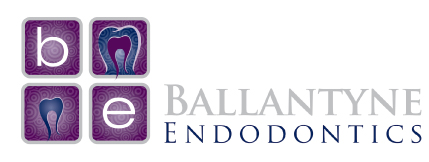Case Study: Cone Beam Detects Perforation
This patient was referred to our practice to evaluate tooth #7, her upper right lateral incisor. She was a healthy 34-year-old female, and had a bump on her gum tissue above this tooth, but with no pain in the area.
Upon examination the prior root canal looked acceptable and there was a post in the canal. There appeared to be a line at the base of the post going to the lateral surface of the root. One could evaluate this line as a sealer tract, or because it is located at the base of the post, a root fracture (see image #1).
A cone beam 3D or CBCT image was taken to better evaluate the tooth. After further evaluation of the CBCT it was evident that the post was placed in the root at the wrong angle and it had perforated the root to the buccal aspect (see image #2). The treatment options of retreatment with perforation repair, or extraction and implant, needs to be presented to the patient.
The CBCT was very helpful in that there is really no way to know that the post was placed off angle until we attempted to retreat the tooth. It would only be evident once the post was removed and the perforation was detected. The CBCT allowed us to have a more informed discussion with the patient and be prepared for the different treatment options, before they occurred.
Remember, every tooth has a story!

